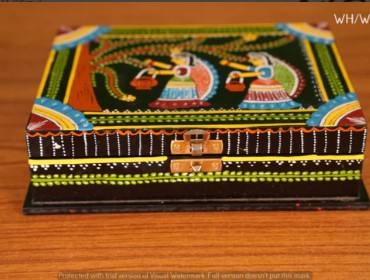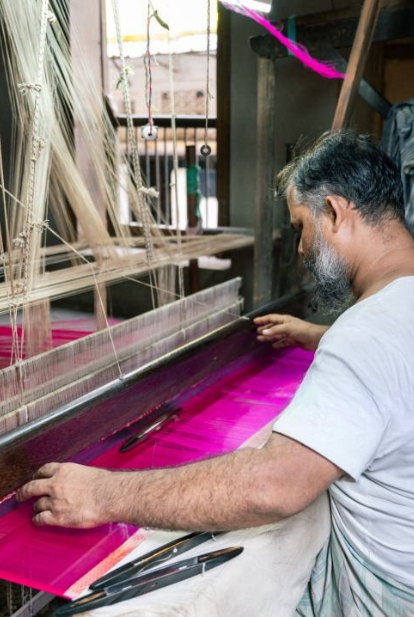
Introduction
India’s cultural heritage is a colorful canvas painted with traditions, rituals, and timeless art forms. Among them, Tikuli Art of Patna holds a special place. This rare craft, with its delicate glass work and hand-painted motifs, is not just an art form—it’s a story of survival, creativity, and revival.
If Madhubani painting celebrates villages and rituals, Tikuli art celebrates elegance, fine detailing, and the royalty of Bihar’s rich culture.
What is Tikuli Art?
The word “Tikuli” comes from the local term for the small bindi worn by Indian women on their forehead. Just like a bindi completes a traditional look, Tikuli paintings add completeness to Bihar’s artistic heritage.
Tikuli is essentially glass-based painting, where artists paint intricate designs on hardboard or glass, often depicting:
-
Indian gods and goddesses
-
Festivals and rituals
-
Scenes from everyday life
-
Floral and geometric motifs
Today, Tikuli has moved beyond decorative pieces to become part of coasters, trays, wall decor, jewelry, and even utility products.
The History of Tikuli Art
Tikuli art has a history of more than 800 years. Its roots can be traced back to the Magadh region of Bihar, especially Patna. During the Mughal era, Tikuli flourished as an art form because of its luxurious appeal. Royal families and rich merchants commissioned Tikuli pieces for palaces and ceremonies.
However, during the colonial period and the rise of industrial production, Tikuli art declined drastically. By the early 20th century, only a few families in Patna were practicing it.
The revival of Tikuli is credited to Upendra Maharathi, a noted artist and nationalist from Bihar, who believed in preserving dying Indian crafts. His efforts in the mid-20th century gave Tikuli art a second life, connecting traditional artisans with modern designs.
How is Tikuli Art Made?
Tikuli art is unique because it combines craftsmanship, patience, and precision. The process involves multiple steps:
-
Base Preparation – Hardboard or MDF board is cut and shaped. Traditionally, glass was used, but today, more durable bases are chosen.
-
Coating – The surface is coated with enamel paint (usually black) to give it a smooth finish.
-
Design Sketching – Artists outline motifs using chalk or pencil.
-
Hand Painting – Using very fine brushes, artisans paint detailed patterns with enamel paints. Bright colors like red, yellow, green, and white are commonly used.
-
Varnishing – A final protective coating is applied to ensure shine and durability.
Each Tikuli piece can take days or even weeks to complete, depending on the complexity.
Tikuli Art in Patna Today
Today, Tikuli art is produced in Patna and nearby districts by small artisan families. These artisans are often women, who combine household responsibilities with hand-painting Tikuli products.
Tikuli has now expanded into corporate gifting, souvenirs, and home decor. From coasters with Madhubani motifs to wall clocks with Tikuli borders, the craft has blended tradition with modern utility.
At Weavehand, we work directly with artisans to bring their Tikuli creations to a global audience. This ensures artisans get fair wages and customers get authentic, handcrafted beauty.
Why Tikuli Art is Special
-
Rare & Unique: Few artisans practice this craft today, making it exclusive.
-
Handmade: Every brushstroke is done by hand, giving each piece its own story.
-
Cultural Heritage: Tikuli is deeply tied to Bihar’s royal and folk traditions.
-
Sustainable: Created with natural or eco-friendly materials, it supports green living.
Storytelling Through Tikuli
Tikuli art isn’t just design—it’s storytelling on wood and glass. A Tikuli coaster might carry the tale of Radha-Krishna, a wall frame might capture Durga Puja, while a jewelry box might have patterns inspired by Mughal motifs.
This art bridges the past and present, reminding us of the beauty of India’s living traditions.
Conclusion
Tikuli art of Patna is more than just a handicraft—it’s a symbol of resilience and creativity. From royal courts to modern homes, this art has traveled centuries, carrying with it the soul of Bihar.
By supporting Tikuli artisans, we’re not just buying a product—we’re keeping history alive.
Explore authentic Tikuli products at Weavehand and bring home a piece of Bihar’s rare and beautiful tradition.



